
It’s funny how often Rava ends up in a meal without us even noticing. One day it’s crisping up a dosa, the next it’s turning into a soft, buttery upma or a warm bowl of halwa. It slips so easily between sweet and savory that you almost forget it’s the same ingredient doing all the work.
Known more widely as semolina, Rava has a mild, nutty flavor and a texture that makes it perfect for quick, comforting meals. It cooks fast, feels hearty, and blends into whatever flavors you give it — which is probably why it’s been a quiet favorite in Indian kitchens for generations.
It’s not the kind of ingredient that asks for attention, but somehow it ends up being part of everything that feels familiar and home-cooked.
What Exactly Is Rava (Semolina)?
Semolina—also known as Rava or Sooji in Indian cuisines—is a coarse flour made by grinding durum wheat, a hard variety known for its high protein and low moisture. It has a sandy texture, pale golden color, and a mild, slightly nutty taste that makes it incredibly versatile in both sweet and savory dishes.
While it may look simple, this tiny grain quietly powers some of the most comforting dishes in global cuisines.
Quick Facts – Rava (Semolina)
- Also known as: Sooji, Suji, Semolina
- Made from: Coarsely ground durum wheat
- Flavor & texture: Mild, nutty, slightly coarse and grainy
- Common uses: Dosas, upma, halwa, idlis, pancakes, puddings
- Cooks in: About 5–10 minutes
- Nutrient highlight: High in protein and iron, low in fat
- Best paired with: Ghee, spices, nuts, and a hint of sweetness or tang
- Storage tip: Keep in an airtight jar away from moisture; lasts up to 6 months
- Fun fact: Rava is used across both North and South Indian cooking — one of the few ingredients that easily crosses regional borders.
Popular Forms You’ll Find It In
Rava comes in a few forms, each with its own purpose—and knowing the difference can make your cooking smoother and more satisfying.
- Fine Rava (Suji)
Smooth in texture and quick to cook, fine rava is perfect for soft halwa and delicate sweets. - Medium or Coarse Rava
A little grainier and more textured, this is the go-to for dishes like upma, idlis, and rava dosa. - Roasted Rava
Already toasted to a light golden color, roasted rava has a nuttier flavor and longer shelf life. Great for upma or instant snack recipes—no extra roasting needed. - Semolina Flour (Western Style)
This is more refined and used mainly in pasta, pizza dough, gnocchi, couscous, and some Middle Eastern or Mediterranean desserts. It's usually finer and often labeled “semolina” on the packaging.
What It Tastes Like
Rava has a mild, slightly nutty flavor with a soft, wheaty aroma. It’s not bold or overpowering—its strength lies in how well it carries other flavors.
When toasted, it develops a lightly roasted, almost buttery note that makes dishes like upma and halwa extra comforting. In baked goods or pasta, it adds a subtle chew and earthy warmth without stealing the spotlight.
Think of it as the supporting actor—never loud, but always making the dish better.
Culinary Uses Around the World
Rava—whether you call it semolina, suji, or something else—is a global kitchen chameleon. Its texture and neutral flavor make it a reliable base for a wide range of dishes, both sweet and savory.
- India
Rava is a staple in everyday meals. It’s used for upma, idli, dosa, halwa (sheera), and sweets like rava laddoo. It also sneaks into batters and snacks for added texture and crispiness. - Italy
In its coarser form, semolina is the go-to flour for pasta. It gives homemade noodles that perfect bite and golden hue. It’s also dusted on pizza crusts for added crunch. - Middle East & North Africa
Semolina is used in desserts like basbousa (a moist cake with syrup), maamoul (date-filled cookies), and semolina breads. It’s prized for creating tender, crumbly textures. - Western Baking
Semolina flour appears in artisan breads, rustic crusts, and sometimes as a thickener for soups or stews. It’s also used to dust baking trays and prevent sticking.
Cooking With Rava
Rava is simple to cook with—but a few small tricks can make a big difference in texture and taste.
- Roast It First (Unless Already Roasted)
Dry-roasting rava in a pan brings out a deeper, nuttier flavor and helps prevent it from turning sticky. Roast it over medium heat until it smells warm and toasty. - Use the Right Liquid Ratio
For upma or halwa, a common starting ratio is 1 part rava to 2.5–3 parts water or milk. Add the liquid slowly, stirring constantly to avoid lumps. - Let It Rest
When making idli or dosa batter with rava, soaking it for 15–30 minutes allows it to absorb moisture and soften, leading to better texture. - Stir While Cooking
Rava thickens fast. Keep stirring to keep it smooth, especially in porridges or puddings. - Adjust Texture by Type
Use fine rava for soft, creamy dishes and coarse rava when you want structure—like in upma or savory cakes.
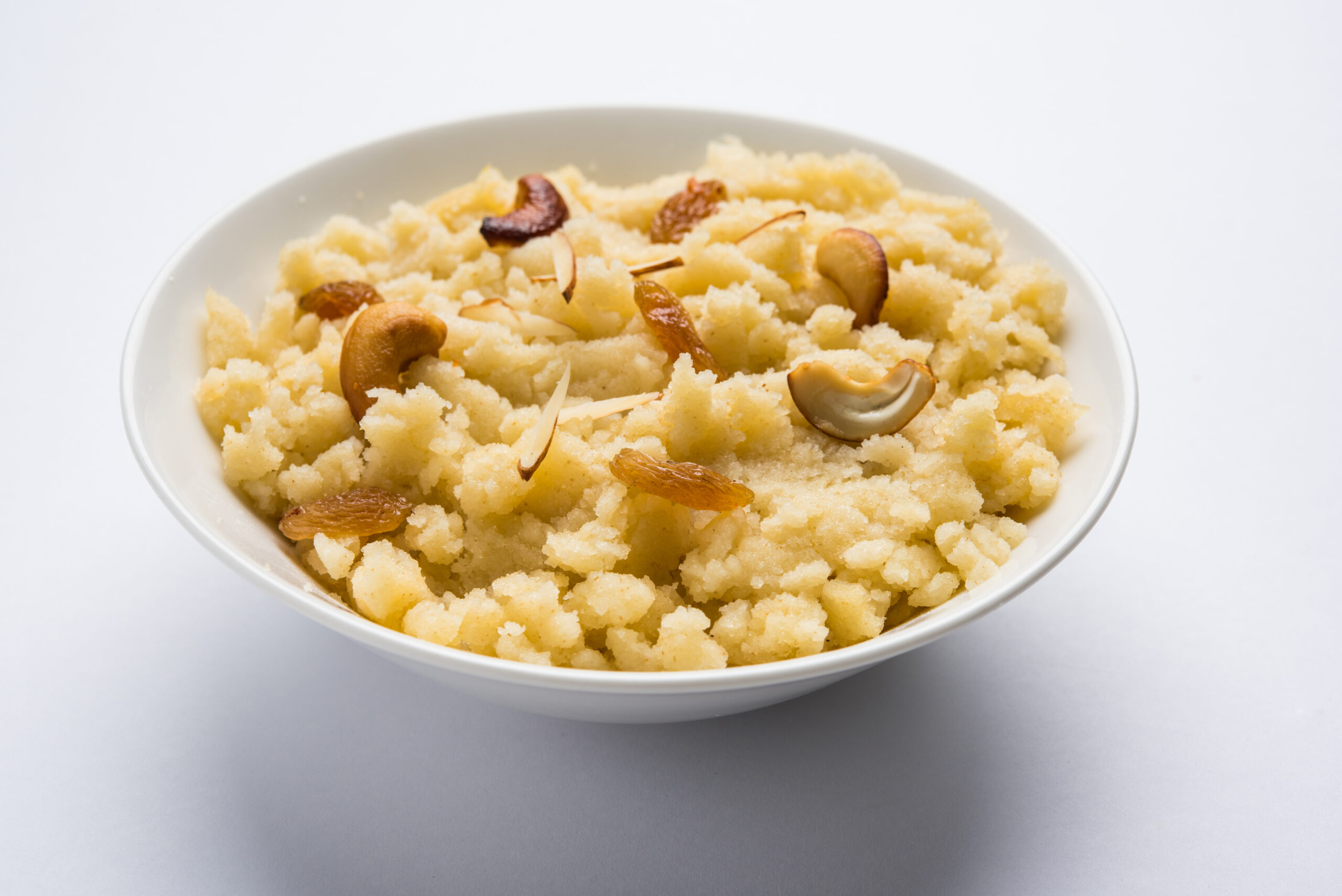
A comforting bowl of suji or semolina halwa—made from roasted rava, ghee, jaggery and green cardamom.
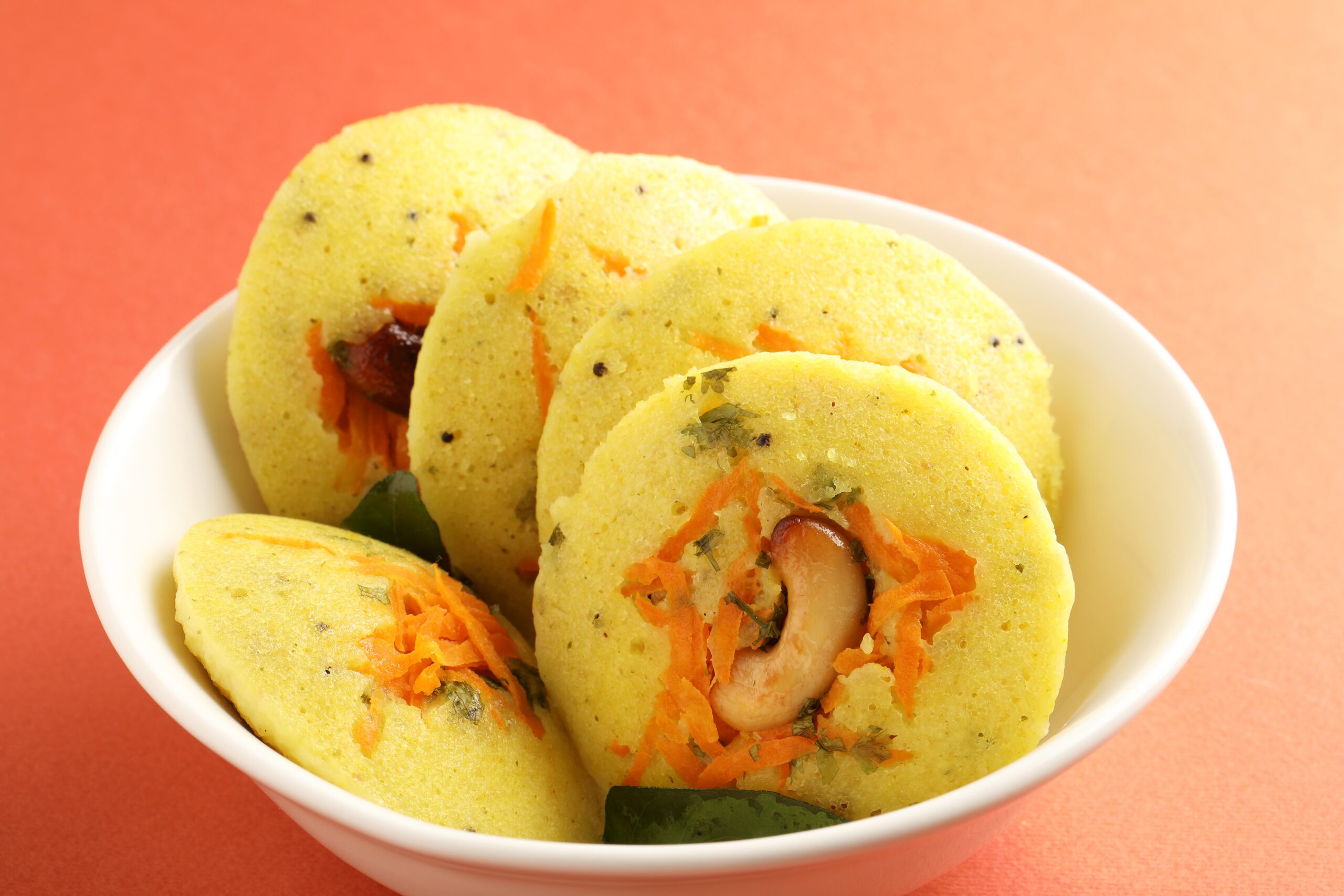
A South Indian an easy, quick savory breakfast option—rava idlis—steamed to perfection using semolina, yogurt, and spices.
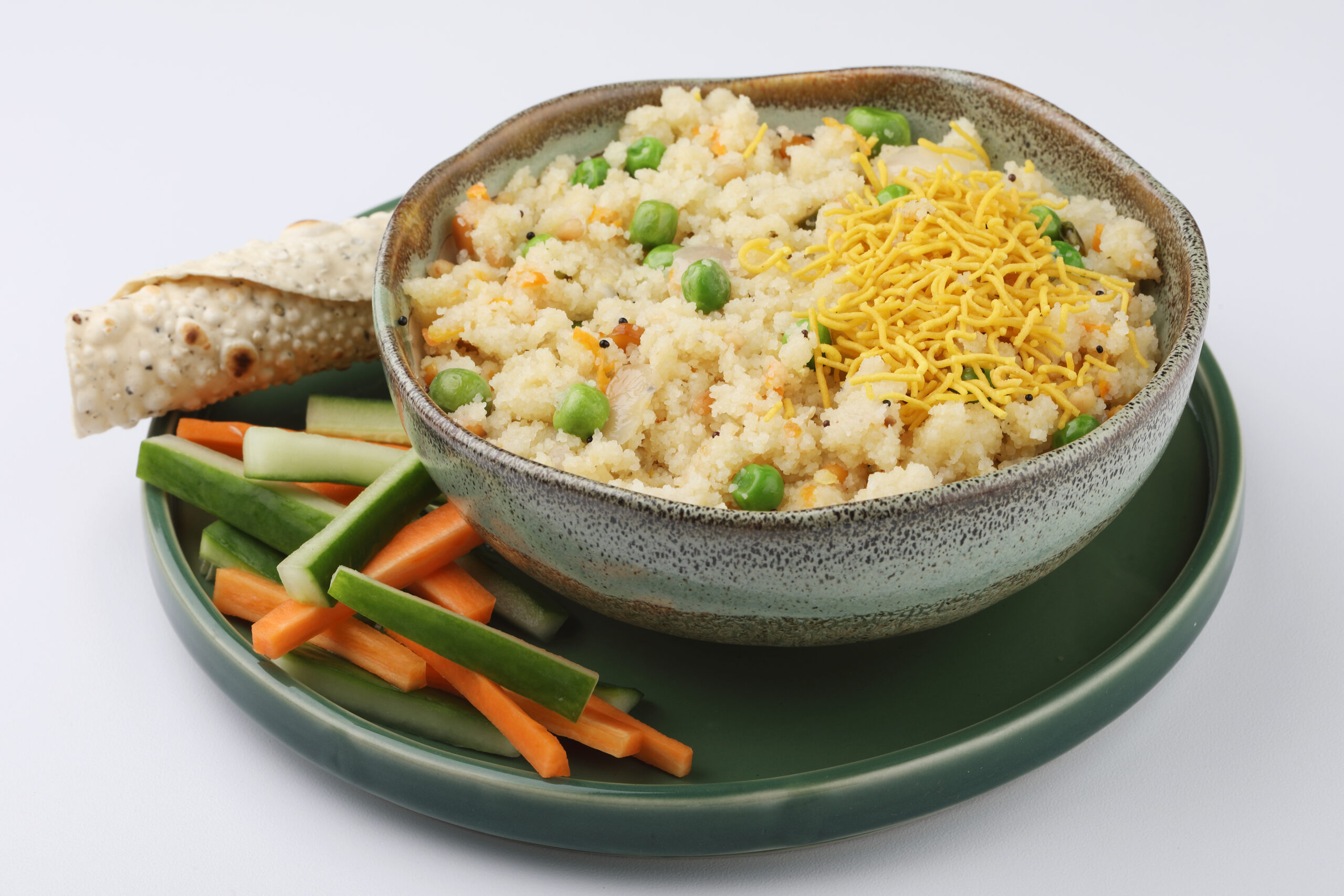
Upma, a savory South Indian breakfast made from rava (semolina), tempered with mustard seeds and curry leaves with a touch of vegetables.
Flavor Pairings That Work Well with Rava
Rava has a gentle, nutty flavor that makes it incredibly adaptable. Whether you’re going sweet or savory, here are some go-to pairings:
For Savory Dishes
- Mustard seeds & curry leaves – Classic tempering that adds aroma and depth to upma or rava idli.
- Ginger, green chili & black pepper – For a warm, slightly spicy kick.
- Ghee or oil – Helps roast rava evenly and adds richness.
- Vegetables like carrots, peas & onions – Add color, texture, and light sweetness to balance the grain.
- Yogurt or buttermilk – Often used in batters to bring moisture and slight tang.
For Sweet Dishes
- Cardamom & saffron – Give halwa and laddoos a classic Indian dessert fragrance.
- Milk or coconut milk – Creamy bases that work beautifully with roasted rava.
- Sugar or jaggery – Natural sweeteners that blend smoothly with semolina’s soft texture.
- Cashews, almonds & raisins – Add crunch and sweetness in halwa or festive treats.
Rava is like a blank canvas—it absorbs flavors easily. The key is to toast it gently and layer your spices or aromatics thoughtfully.
Rava Substitutes
If you're out of rava—or need an alternative due to dietary needs—here are some smart substitutes that can work depending on the dish:
For Idli, Dosa, or Upma
- Rice flour + a little yogurt or baking soda – For soft batters in gluten-free cooking.
- Coarsely ground oats – A fiber-rich, healthier swap in upma or porridge-like dishes.
- Cracked wheat (dalia) – Similar texture, works well in savory recipes.
For Sweets or Halwa
- Cream of wheat (farina) – Often used interchangeably in Western recipes; similar texture.
- Ground rice or rice flour – Milder, but gives a smooth finish when roasted.
- Besan (gram flour) – Works for certain Indian sweets, though the flavor and texture will change.
For Baking or Pasta
- All-purpose flour – A flexible substitute in baking, though you’ll lose the slight coarseness.
- Whole wheat flour – Works well in hearty baking, though not ideal for traditional pasta.
- Cornmeal – Adds texture in crusts or some baked goods but doesn’t behave exactly like semolina.
When substituting rava, adjust liquid quantities as each alternative absorbs moisture differently.
How to Store It Right
- Use an airtight container – Always transfer rava to a sealed jar or container to keep out air and humidity.
- Store in a cool, dry place – A pantry shelf is fine if your kitchen stays dry. Otherwise, consider refrigeration in humid climates.
- Freeze for long-term use – If you don’t use rava often, freezing in ziplock bags can prevent bugs and extend shelf life without affecting taste.
If your rava smells off or clumps easily, it may have absorbed moisture—best to discard and refresh your stock.
Nutritional Value (Per 1 tablespoon / 10g of dry Rava)
- Calories: ~35–40 kcal
- Carbohydrates: ~7–8g
- Protein: ~1g
- Fat: ~0.1g
- Fiber: ~0.3g
- Iron: ~0.3–0.5 mg
- B vitamins: Trace amounts (especially folate and thiamine)
- Calcium: ~1–2 mg
Health Benefits of Rava (Semolina)
Rava may look simple, but it can offer a few solid health perks—especially when it’s part of a balanced diet.
- It may support energy levels
Rava is rich in complex carbs, which can help fuel your body with steady energy throughout the day (Source). - It may aid digestion
Due to its fiber content, rava can help keep things moving—especially when paired with veggies and healthy fats (Source). - It can help you feel full
Rava absorbs water as it cooks, which can make you feel fuller for longer. That’s one reason it’s often used in light but satisfying meals like upma (Source). - It may offer small amounts of iron and B vitamins
Some brands of semolina are fortified, which means they may provide essential nutrients like iron, folate, and thiamine. These nutrients play a role in energy metabolism and red blood cell production (Source).
Potential Health Risks
While rava is generally safe and well-tolerated, there are a few things to keep in mind—especially if you're eating it regularly or have specific health concerns:
- It contains gluten
Rava is made from wheat, so it’s not suitable for people with celiac disease or gluten intolerance. Even small amounts may trigger reactions (Source). - It may cause blood sugar spikes
Rava is a refined grain and can raise blood sugar levels more quickly than whole grains (Source). - It may contribute to weight gain if overconsumed
Like most refined carbs, rava is calorie-dense and low in fiber. Eating large portions frequently may lead to weight gain, especially if not balanced with other nutrients (Source).
Rava isn’t harmful, but balance is key. Think of it as a versatile base—not the star of every meal.
Final Thoughts
Rava may not be flashy, but it’s one of those quiet kitchen staples that shows up in all the right places—fluffy idlis, golden halwa, cozy upma, or even a crisp dosa when you're short on time.
It’s quick, adaptable, and plays well with both sweet and savory flavors. Sure, it’s not packed with superfood status, but when used mindfully and paired well, it brings comfort, texture, and just the right kind of simplicity to your plate.
Whether you're toasting it in ghee or whisking it into a batter, rava is all about making everyday cooking a little easier and a lot more delicious.
FAQs
Is rava the same as semolina?
Yes, rava and semolina refer to the same ingredient—coarsely ground wheat. “Rava” is the term commonly used in Indian cooking.
Is rava gluten-free?
No, rava is made from wheat and contains gluten. It’s not suitable for those with celiac disease or gluten intolerance.
What’s the difference between fine and coarse rava?
Fine rava is smoother and cooks faster great for batters and sweets. Coarse rava adds more texture, making it ideal for upma or porridge-style dishes.
Can rava be used for baking?
Yes, especially in crusts or cakes where a slightly grainy texture is welcome. Semolina is also used in some pasta recipes and breads.
How long does rava last in the pantry?
Stored in an airtight container in a cool, dry place, rava can last 6–8 months. In humid climates, refrigerate or freeze it to prevent spoilage.
Learn More About Rava (Semolina)
Wikipedia – Semolina
This article explaining that semolina is a coarse flour made from durum wheat, commonly used in making pasta, couscous, and various sweet and savory dishes across different cultures. It also covers its culinary uses, nutritional content, and regional variations.
Healthline – Nutrition, Benefits, Uses, Downsides
This engaging article covering the nutritional profile, health benefits, and potential risks of semolina. It highlights that semolina is rich in protein, fiber, and B vitamins, but may not be suitable for people with gluten sensitivity or wheat allergies.


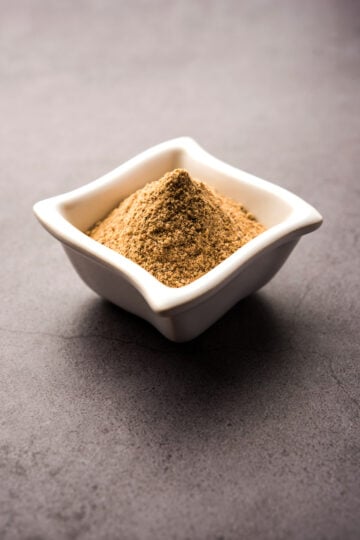
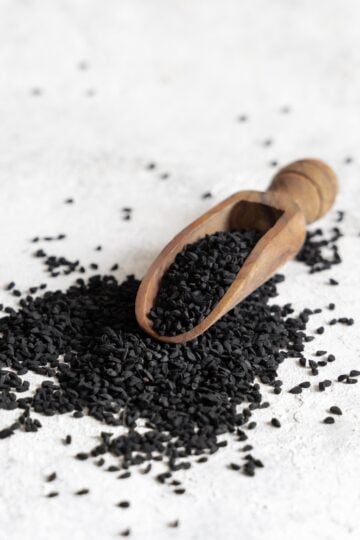
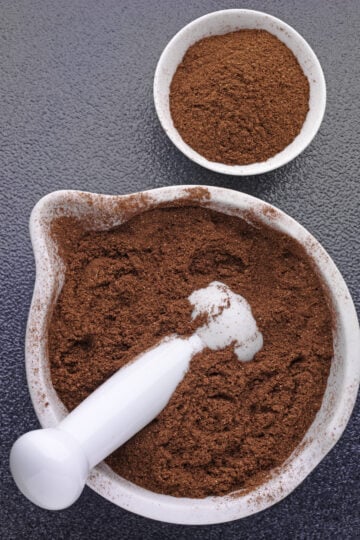
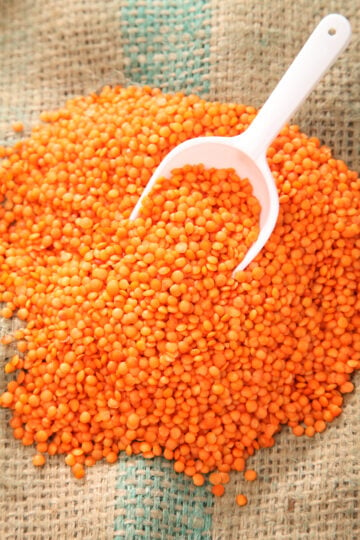
Have a question or something to share? Leave a comment below!